Assalamualaikum & salam ramadhan..
Fuh, rasanya dah lama aku tak jenguk blog aku ni sampaikan terlupa nama pengguna dan kata laluan..hahaha, abaikan. Sedar tak sedar kita dah pun nak masuk bulan ramadhan al mubarak yang dirindui. Masa berjalan terlalu lalu sampaikan aku terasa macam baru semalam kot kita baru abis raya (hahah, memang panjang mood raya aku ni) tapi serius, masa tu dah terlalu cepat berlalu sekarang. Ah, abaikan.. apa yang penting untuk ramadhan kali ni jom kita sama-sama ubah diri kita..perbanyakkan muhasabah diri..renungkan apa pencapaian terbesar yang dah kita buat selepas ramadhan tahun lepas sama ada meningkat atau menurun. Kalau meningkat, Alhamdulillah tapi kalau menurun, Subhanallah.. Sama-sama tingkatkan untuk ramadhan kali ni. Sebenarnya, bukan yang ni aku nak ceta.. ni cuma kata alu-aluan jak (ikut format teks ucapan spm :P). Apa yang aku nak kongsi pepagi ni ialah tentang kegilaan baharu (amboi, bahasa aku..format bm abis, haha) yang sebenarnya dah lama aku nak buat tapi semuanya tak kesampaian jadi kali ini aku nak sampaikanlah..Apa tu kegilaan baharu aku?? hanya satu perkataan jak yang dah boleh gambarkan apa kegilaan baharu aku tu iaitu 'GUNPLA'..hahaha,
APA TU GUNPLA Brader??
Bagi sesapa yang tak tau apa bondonya GUNPLA tu, meh aku ceta sikit. GUNPLA ni sebenarnya model kit robot kecik yang kita potong dan cantum yang akhirnya siap sama ada dalam tempoh berhari-hari (versi malas) atau siap dalam sehari jak (versi semangat). GUNPLA ni terbahagi kepada beberapa jenis ikut kualiti dan saiz. Ada yang bersaiz comel gitu dan ada yang bersaiz gergasi (boleh ganti beruang busuk yang bebudak selalu bawa tido..hahah). Senang ceta, korang rujuk gambar bawah ni..aku malas nak taip panjang-panjang.
Nampak tak? yang ni lah GUNPLA, kegilaan baharu aku..saiz yang paling besar tu dah boleh bawa tido..hahaha, cuma keras sikit dari patung beruang kaler coklat tu.. Kiranya aku ni baru nak menapak dalam hobi kumpul benda ni..hahaha, Nak dijadikan ceta, aku dah usha mana satu yang aku nak jadikan GUNPLA pertama aku. Jadi, fikir punya fikir akhirnya aku pilih jenis RG (REAL GRADE) disebabkan kualitinya yang mantap walaupun mahal sikit..huhuhu, tak pa lah, yang penting hati puas brader. hahah, OPSS, sebelum aku ceta lebih panjang, baik aku ceta apa tu REAL GRADE.. Macam yang aku cakap tadi, GUNPLA ni dibezakan ikut kualiti dan saiz. Kalau tadi, korang dah nampak beza GUNPLA dari segi saiz kan? Sekarang, korang tengok pulak gambar ni.
Setiap saiz dan kualiti GUNPLA ni dikategorikan ikut gred.. Macam yang korang dah tengok dalam gambar di atas, kualiti paling rendah dan comel ialah SD BB dan yang paling tinggi Perfect Grade (PG). Sebenarnya ada lagi jenis-jenis GUNPLA selain dari dalam gambar ni cuma yang ni adalah yang biasa orang cari dan kumpul. Jadi, kalau korang tengok model RG dan HG lebih kurang sama saiz kan? tiada beza pun kan? Napa tak ambil HG? Sebenarnya, yang membezakan RG dan HG ialah kualiti dan ketelitian model tu. RG ni kiranya lebih menyamai model GUNDAM anime yang kita dok layan tu (bagi yang minat lah). Dari aspek warna model pun ada beza jugak dan disebabkan model RG ni lebih sama dengan anime maka segala pelekat dan warna tu lengkap dan sempurna. Kalau nak buat tambah garisan halus pun sikit jak berbanding HG yang kita kena banyak lukis dan tambah warna. Jadi, sebab tu lah aku pilih RG.. haha, tu lah jak lah aku nak kongsi pepagi ni. In Shaa Allah, kalau aku dah dapat model kit tu, aku akan kemaskini lagi entri tentang GUNPLA ni, Apa jenis model yang aku pilih disamping perkembangan 'pembinaan' robot aku tu nanti..hahaha, jadi TUNGGU...
Sekian..
p/s: aku taip entri ni sambil dengar lagu raya..siok woo, macam esok jak nak raya..hahah, layan..
The Only Road..
Journey of my life.
Welcome Readers..
Blog ini mengisahkan tentang apa saja yang berlaku dalam dunia pada hari ini yang mana akan ku kupas mengikut pemerhatian dan pandangan ku sendiri.
Thursday, June 26, 2014
Friday, March 7, 2014
Penjenamaan semula..
Assalamualaikum..
Fuh, akhirnya setelah sejam lebih aku memilih rekabentuk paparan, siap jugak lah blog yang pernah menjadi salah satu tugasan aku masa menuntut di universiti dulu. Rasanya rekabentuk paparan yang ringkas itu lebih baik sebab memudahkan bahan untuk dibaca. Takda lah serabut sangat otak melihat apa yang blog aku ni.
OK, dengan ini secara rasminya aku menjenamakan semula blog yang sebelum ini isinya lebih kepada tugasan yang wajib disiapkan kepada blog santai yang akan jadi tempat aku meluahkan apa yang aku lihat,dengar,rasa dan fikir. Bahasa yang aku gunakan untuk penulisan blog ini memang agak kebakuan dengan bahasa 'pasar' tapi aku lebih memilih untuk gunakan bahasa melayu 'pasar' daripada mencampurkannya dengan bahasa lain. Biarlah bahasa 'pasar' itu melayu berbanding bahasa 'rojak' import daripada luar negara. Jadi, bersedialah untuk membaca isi fikiran aku yang taklah seberapa ini. Sekali lagi, selamat datang ke blog ini dan selamat membaca.
Sekian... fuh
Wednesday, April 28, 2010
3rd task : Suasana di Pasar Raya

meriah di pasar raya.
camera angle :high angle/bird view (subjective camera)(established shot)
iso speed : 50
f/stop : f/2.8
date : 27/3/10

kesibukan membeli barang.
camera angle :high angle/bird view (subjective camera)(established shot)
iso speed : 50
f/stop : f/2.8
date : 27/3/10

mari pilih kasut.
camera angle :low angle/frog view (subjective camera)(established shot)
iso speed : 50
f/stop : f/2.8
date : 27/3/10

Cloths department.
camera angle :normal angle (subjective camera)(established shot)
iso speed : 50
f/stop : f/2.8
date : 27/3/10

sekitar kaunter pembayaran.
camera angle :normal angle (subjective camera)(established shot)
iso speed : 50
f/stop : f/2.8
date : 27/3/10

Jom beli - belah.
camera angle :normal angle (subjective camera)(established shot)
iso speed : 50
f/stop : f/2.8
date : 27/3/10
Sunday, April 4, 2010
4th task : Alam ( Bhg 2 )
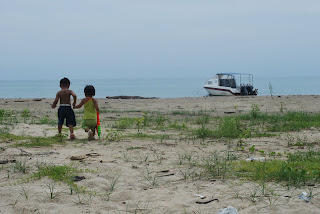
Jom mandi pantai..
camera angle :normal angle (subjective camera)(established shot)
iso speed : 100
f/stop : f/9
date : 31/3/10
Taken by : Saiful

root..
camera angle : normal angle (objective camera)
iso speed : 100
f/stop : f/5.6
date : 5/4/10
taken by : Khairunnisa

satu sudut pemandangan di pantai.
camera angle : normal angle (subjective camera)(established shot)
iso speed : 100
f/stop : f/10
date : 5/4/10
taken by : Khairunnisa

Mandi laut.
camera angle :normal angle (subjective camera)(established shot)
iso speed : 100
f/stop : f/10
date : 5/4/10
taken by : Khairunnisa

Kinabalu Mountain from far.
camera angle :normal angle (subjective camera)(Long shot)
iso speed : 400
f/stop : f/5.1
date : 5/3/10
taken by : Atiqah

Mini stream in the wood.
camera angle :high angle/bird view (subjective camera)(established shot)
iso speed : 100
f/stop : f/5.1
date : 5/4/10
taken by : Atiqah

Sunset...
camera angle :normal angle (subjective camera)(established shot)
iso speed : 100
f/stop : f/2.8
date : 5/4/10
taken by : Atiqah
Saturday, April 3, 2010
Study Notes
1.0 Pengenalan kepada fotografi
• Apakah fotografi [1]
• Fotografi dlm kehidupan seharian
• Fotografi dlm kehidupan masyarakat
• Fotografi sebagai medium visual dan bahasa
2.0 Bagaimana sesebuah kamera berfungsi
• Komponen badan kamera [1]
• Perbezaan kamera 35m viewfinder dengan kamera SLR [1] [2]
• Lensa kamera [1]
• Meter penata cahaya [1]
3.0 Teori-teori berkaitan fotografi
• Teori framing [1] [2]
• Kepuasan gambar
• Aspek psikologi sesebuah imej dlm media
4.0 Aplikas dan kesan aperture dan shutter speed
• Hubungan aperture dan shutter speed dalam penghasilan gambar [1] [2] [3]
• Depth of field [1]
• Perbandingan mode pengambil gambar [1]
• Ekperimen dan penelitian kualiti gambar
• Implikasi imej [1]
• Keperluan berstrategi dalam kerja fotografi
5.0 Teknik pengambilan gambar (shots)
• Kepelbagaian shot [1] [2]
• Pengadunan imej, cahaya dan teknik shutter speed [1]
• Impak 3-dimensional
6.0 Elemen-elemen gambar yg mempengaruhi khalayak media
• Scene dan sequences dan emosi khalayak [1] [2]
• Teknik persembahan mesej
• Konsep reality yg digambarkan oleh foto
• Apakah fotografi [1]
• Fotografi dlm kehidupan seharian
• Fotografi dlm kehidupan masyarakat
• Fotografi sebagai medium visual dan bahasa
2.0 Bagaimana sesebuah kamera berfungsi
• Komponen badan kamera [1]
• Perbezaan kamera 35m viewfinder dengan kamera SLR [1] [2]
• Lensa kamera [1]
• Meter penata cahaya [1]
3.0 Teori-teori berkaitan fotografi
• Teori framing [1] [2]
• Kepuasan gambar
• Aspek psikologi sesebuah imej dlm media
4.0 Aplikas dan kesan aperture dan shutter speed
• Hubungan aperture dan shutter speed dalam penghasilan gambar [1] [2] [3]
• Depth of field [1]
• Perbandingan mode pengambil gambar [1]
• Ekperimen dan penelitian kualiti gambar
• Implikasi imej [1]
• Keperluan berstrategi dalam kerja fotografi
5.0 Teknik pengambilan gambar (shots)
• Kepelbagaian shot [1] [2]
• Pengadunan imej, cahaya dan teknik shutter speed [1]
• Impak 3-dimensional
6.0 Elemen-elemen gambar yg mempengaruhi khalayak media
• Scene dan sequences dan emosi khalayak [1] [2]
• Teknik persembahan mesej
• Konsep reality yg digambarkan oleh foto
Wednesday, March 31, 2010
Film Speed ( ISO )
Film speed is the measure of a photographic film's sensitivity to light, determined by sensitometry and measured on various numerical scales, the most recent being the ISO system. Relatively insensitive film, with a correspondingly lower speed index requires more exposure to light to produce the same image density as a more sensitive film, and is thus commonly termed a slow film. Highly sensitive films are correspondingly termed fast films. A closely related ISO system is used to measure the sensitivity of digital imaging systems. In both digital and film photography, the reduction of exposure corresponding to use of higher sensitivities generally leads to reduced image quality (via coarser film grain or higher image noise of other types). Basically, the higher the film speed, the worse the photo quality.
Historic systems
GOST (Russian: ГОСТ) is an arithmetic scale which was used in the former Soviet Union before 1997. It is almost identical to the ASA standard, having been based on a speed point at a density 0.2 above base plus fog, as opposed to the ASA's 0.1. After 1987, the GOST scale was aligned to the ISO scale. GOST markings are only found on pre-1987 photographic equipment (film, cameras, lightmeters, etc.) of Soviet Union manufacture.
Current ISO system
The current International Standard for measuring the speed of color negative film is called ISO 5800:1987 from the International Organization for Standardization (ISO). Related standards ISO 6:1993 and ISO 2240:2003 define scales for speeds of black-and-white negative film and color reversal film. This system defines both an arithmetic and a logarithmic scale, combining the previously separate ASA and DIN systems.
In the ISO arithmetic scale, corresponding to the ASA system, a doubling of the sensitivity of a film requires a doubling of the numerical film speed value. In the ISO logarithmic scale, which corresponds to the DIN scale, adding 3° to the numerical value that designates the film speed constitutes a doubling of that value. For example, a film rated ISO 200/24° is twice as sensitive as a film rated ISO 100/21°.
Commonly, the logarithmic speed is omitted, and only the arithmetic speed is given; for example, “ISO 100”.
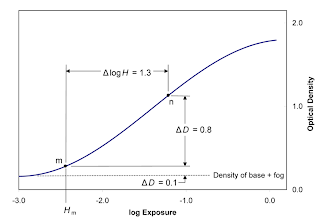
ISO 6:1993 method of determining speed for black-and-white film.
Applying film speed
Film speed is used in the exposure equations to find the appropriate exposure parameters. Four variables are available to the photographer to obtain the desired effect: lighting, film speed, f-number (aperture size), and shutter speed (exposure time). The equation may be expressed as ratios, or, by taking the logarithm (base 2) of both sides, by addition, using the APEX system, in which every increment of 1 is a doubling of exposure; this increment is commonly known as a "stop". The effective f-number is proportional to the ratio between the lens focal length and aperture diameter, the diameter itself being proportional to the square root of the aperture area. Thus, a lens set to f/1.4 allows twice as much light to strike the focal plane as a lens set to f/2. Therefore, each f-number factor of the square root of two (approximately 1.4) is also a stop, so lenses are typically marked in that progression: f/1.4, 2, 2.8, 4, 5.6, 8, 11, 16, 22, 32, etc.
Commonly stated values for exposure parameters are rounded to convenient values that are easy to remember; however, the actual values to be used in exposure calculations are in exact power-of-2 progressions.
Source : http://en.wikipedia.org/wiki/ISO_speed
Historic systems
GOST (Russian: ГОСТ) is an arithmetic scale which was used in the former Soviet Union before 1997. It is almost identical to the ASA standard, having been based on a speed point at a density 0.2 above base plus fog, as opposed to the ASA's 0.1. After 1987, the GOST scale was aligned to the ISO scale. GOST markings are only found on pre-1987 photographic equipment (film, cameras, lightmeters, etc.) of Soviet Union manufacture.
Current ISO system
The current International Standard for measuring the speed of color negative film is called ISO 5800:1987 from the International Organization for Standardization (ISO). Related standards ISO 6:1993 and ISO 2240:2003 define scales for speeds of black-and-white negative film and color reversal film. This system defines both an arithmetic and a logarithmic scale, combining the previously separate ASA and DIN systems.
In the ISO arithmetic scale, corresponding to the ASA system, a doubling of the sensitivity of a film requires a doubling of the numerical film speed value. In the ISO logarithmic scale, which corresponds to the DIN scale, adding 3° to the numerical value that designates the film speed constitutes a doubling of that value. For example, a film rated ISO 200/24° is twice as sensitive as a film rated ISO 100/21°.
Commonly, the logarithmic speed is omitted, and only the arithmetic speed is given; for example, “ISO 100”.

ISO 6:1993 method of determining speed for black-and-white film.
Applying film speed
Film speed is used in the exposure equations to find the appropriate exposure parameters. Four variables are available to the photographer to obtain the desired effect: lighting, film speed, f-number (aperture size), and shutter speed (exposure time). The equation may be expressed as ratios, or, by taking the logarithm (base 2) of both sides, by addition, using the APEX system, in which every increment of 1 is a doubling of exposure; this increment is commonly known as a "stop". The effective f-number is proportional to the ratio between the lens focal length and aperture diameter, the diameter itself being proportional to the square root of the aperture area. Thus, a lens set to f/1.4 allows twice as much light to strike the focal plane as a lens set to f/2. Therefore, each f-number factor of the square root of two (approximately 1.4) is also a stop, so lenses are typically marked in that progression: f/1.4, 2, 2.8, 4, 5.6, 8, 11, 16, 22, 32, etc.
Commonly stated values for exposure parameters are rounded to convenient values that are easy to remember; however, the actual values to be used in exposure calculations are in exact power-of-2 progressions.
Source : http://en.wikipedia.org/wiki/ISO_speed
2nd task : Sekitar Kampus ( Bhg 2 )

letupan bunga api di padang UMS.
camera angle :normal angle (subjective camera)(long shot)
iso speed : 200
f/stop : f/5.1
date : 4/3/10
taken by : Atiqah

Beratur membeli lauk - pauk untuk mengisi perut yang lapar.
camera angle :normal angle (subjective camera)(established shot)
iso speed : 400
f/stop : f/3.6
date : 22/3/10
taken by : eizah fateen

Menunggu bas dengan penuh kesabaran dan ke'panas'an.
camera angle :normal angle (subjective camera)(established shot)
iso speed : 100
f/stop : f/3.9
date : 22/3/10
taken by : Siti Adibah

Berbincang atau bergosip?. Apa - apa pun suasana seperti inilah yang menjadi sebahagian daripada senario kampus Universiti Malaysia Sabah.
camera angle : normal view (subjective camera)(established shot)
iso speed : 800
f/stop : f/3.6
date : 23/3/10
taken by : Muhd Syukri
Saturday, March 27, 2010
Camera Angles (Framing or Shot Length)
Extreme Long Shot
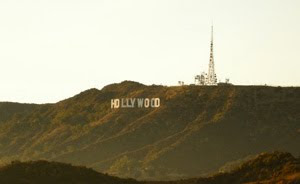
This can be taken from as much as a quarter of a mile away, and is generally used as a scene-setting, establishing shot. It normally shows an EXTERIOR, eg the outside of a building, or a landscape, and is often used to show scenes of thrilling action eg in a war film or disaster movie. There will be very little detail visible in the shot, it's meant to give a general impression rather than specific information.
The extreme long shot on the left is taken from a distance, but denotes a precise location - it might even connote all of the entertainment industry if used as the opening shot in a news story.
Long Shot
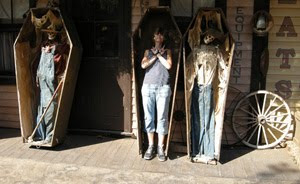
This is the most difficult to categorise precisely, but is generally one which shows the image as approximately "life" size ie corresponding to the real distance between the audience and the screen in a cinema (the figure of a man would appear as six feet tall). This category includes the FULL SHOT showing the entire human body, with the head near the top of the frame and the feet near the bottom. While the focus is on characters, plenty of background detail still emerges: we can tell the coffins on the right are in a Western-style setting, for instance.
Medium Shot

Contains a figure from the knees/waist up and is normally used for dialogue scenes, or to show some detail of action. Variations on this include the TWO SHOT (containing two figures from the waist up) and the THREE SHOT (contains 3 figures...). NB. Any more than three figures and the shot tends to become a long shot. Background detail is minimal, probably because location has been established earlier in the scene - the audience already know where they are and now want to focus on dialogue and character interation. Another variation in this category is the OVER-THE-SHOULDER-SHOT, which positions the camera behind one figure, revealing the other figure, and part of the first figure's back, head and shoulder.
Close Up

This shows very little background, and concentrates on either a face, or a specific detail of mise en scène. Everything else is just a blur in the background. This shot magnifies the object (think of how big it looks on a cinema screen) and shows the importance of things, be it words written on paper, or the expression on someone's face. The close-up takes us into the mind of a character. In reality, we only let people that we really trust get THAT close to our face - mothers, children and lovers, usually - so a close up of a face is a very intimate shot. A film-maker may use this to make us feel extra comfortable or extremely uncomfortable about a character, and usually uses a zoom lens in order to get the required framing.
Extreme Close Up
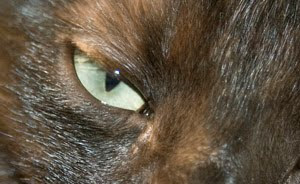
As its name suggests, an extreme version of the close up, generally magnifying beyond what the human eye would experience in reality. An extreme close-up of a face, for instance, would show only the mouth or eyes, with no background detail whatsoever. This is a very artificial shot, and can be used for dramatic effect. The tight focus required means that extra care must be taken when setting up and lighting the shot - the slightest camera shake or error in focal length is very noticeable.
Source : http://www.mediaknowall.com/camangles.html

This can be taken from as much as a quarter of a mile away, and is generally used as a scene-setting, establishing shot. It normally shows an EXTERIOR, eg the outside of a building, or a landscape, and is often used to show scenes of thrilling action eg in a war film or disaster movie. There will be very little detail visible in the shot, it's meant to give a general impression rather than specific information.
The extreme long shot on the left is taken from a distance, but denotes a precise location - it might even connote all of the entertainment industry if used as the opening shot in a news story.
Long Shot

This is the most difficult to categorise precisely, but is generally one which shows the image as approximately "life" size ie corresponding to the real distance between the audience and the screen in a cinema (the figure of a man would appear as six feet tall). This category includes the FULL SHOT showing the entire human body, with the head near the top of the frame and the feet near the bottom. While the focus is on characters, plenty of background detail still emerges: we can tell the coffins on the right are in a Western-style setting, for instance.
Medium Shot

Contains a figure from the knees/waist up and is normally used for dialogue scenes, or to show some detail of action. Variations on this include the TWO SHOT (containing two figures from the waist up) and the THREE SHOT (contains 3 figures...). NB. Any more than three figures and the shot tends to become a long shot. Background detail is minimal, probably because location has been established earlier in the scene - the audience already know where they are and now want to focus on dialogue and character interation. Another variation in this category is the OVER-THE-SHOULDER-SHOT, which positions the camera behind one figure, revealing the other figure, and part of the first figure's back, head and shoulder.
Close Up

This shows very little background, and concentrates on either a face, or a specific detail of mise en scène. Everything else is just a blur in the background. This shot magnifies the object (think of how big it looks on a cinema screen) and shows the importance of things, be it words written on paper, or the expression on someone's face. The close-up takes us into the mind of a character. In reality, we only let people that we really trust get THAT close to our face - mothers, children and lovers, usually - so a close up of a face is a very intimate shot. A film-maker may use this to make us feel extra comfortable or extremely uncomfortable about a character, and usually uses a zoom lens in order to get the required framing.
Extreme Close Up

As its name suggests, an extreme version of the close up, generally magnifying beyond what the human eye would experience in reality. An extreme close-up of a face, for instance, would show only the mouth or eyes, with no background detail whatsoever. This is a very artificial shot, and can be used for dramatic effect. The tight focus required means that extra care must be taken when setting up and lighting the shot - the slightest camera shake or error in focal length is very noticeable.
Source : http://www.mediaknowall.com/camangles.html
Aperture
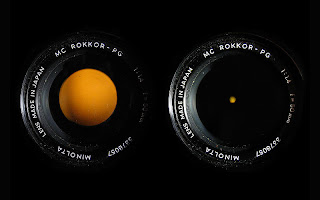
The aperture range of a 50mm "Minolta" lens, f/1.4-f/16.
In optics, an aperture is a hole or an opening through which light travels. More specifically, the aperture of an optical system is the opening that determines the cone angle of a bundle of rays that come to a focus in the image plane. The aperture determines how collimated the admitted rays are, which is of great importance for the appearance at the image plane. If the admitted rays also pass through a lens, highly collimated rays (narrow aperture) will result in sharpness at the image plane, while uncollimated rays (wide aperture) will result in sharpness for rays with the right focal length only. This means that a wide aperture results in an image that is sharp around what the lens is focusing on and blurred otherwise. The aperture also determines how many of the incoming rays are actually admitted and thus how much light reaches the image plane (the narrower the aperture, the darker the image).
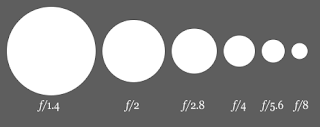
Diagram of decreasing aperture sizes (increasing f-numbers) for "full stop" increments (factor of two aperture area per stop).
An optical system typically has many openings, or structures that limit the ray bundles (ray bundles are also known as pencils of light). These structures may be the edge of a lens or mirror, or a ring or other fixture that holds an optical element in place, or may be a special element such as a diaphragm placed in the optical path to limit the light admitted by the system. In general, these structures are called stops, and the aperture stop is the stop that determines the ray cone angle, or equivalently the brightness, at an image point.
In some contexts, especially in photography and astronomy, aperture refers to the diameter of the aperture stop rather than the physical stop or the opening itself. For example, in a telescope the aperture stop is typically the edges of the objective lens or mirror (or of the mount that holds it). One then speaks of a telescope as having, for example, a 100 centimeter aperture. Note that the aperture stop is not necessarily the smallest stop in the system. Magnification and demagnification by lenses and other elements can cause a relatively large stop to be the aperture stop for the system.
Sometimes stops and diaphragms are called apertures, even when they are not the aperture stop of the system.
The word aperture is also used in other contexts to indicate a system which blocks off light outside a certain region. In astronomy for example, a photometric aperture around a star usually corresponds to a circular window around the image of a star within which the light intensity is summed.
Source : http://en.wikipedia.org/wiki/Aperture
shutter speed

A pinwheel photographed at three different shutter speeds.
In still cameras, the term shutter speed represents the time that the shutter remains open when taking a photograph. Along with the aperture of the lens (also called f-number), it determines the amount of light that reaches the film or sensor. Conventionally, the exposure is measured in units of Exposure value or EV, sometimes called stops, representing a halving or doubling of the exposure.
Multiple combinations of shutter speed and aperture can give the same exposure: halving the shutter speed doubles the exposure (1 EV more), while doubling the aperture (halving the number) increases the exposure by a factor of 4 (2 EV). For this reason, standard apertures differ by √2, or about 1.4. Thus an exposure with a shutter speed of 1/250 s and f/8 is the same as with 1/500 s and f/5.6, or 1/125 s and f/11.
The shutter speed, or more literally exposure time, is measured in seconds, but almost universally marked as a fraction of a second. A typical exposure time for photographs taken in sunlight is 8 milliseconds, or 1/125th of a second, typically marked as 125 on a shutter speed dial or shown as 125 on a digital display.
In addition to its effect on exposure, the shutter speed changes the way movement appears in the picture. Very short shutter speeds can be used to freeze fast-moving subjects, for example at sporting events. Very long shutter speeds are used to intentionally blur a moving subject for artistic effect.[1] Short exposure times are sometimes called "fast", and long exposure times "slow".
Adjustment to the aperture controls the depth of field, the distance range over which objects are acceptably sharp; such adjustments need to be compensated by changes in the shutter speed.
In early days of photography, available shutter speeds were not standardized, though a typical sequence might have been 1/10 s, 1/25 s, 1/50 s, 1/100 s, 1/200 s and 1/500 s. Following the adoption of a standardized way of representing aperture so that each major step exactly doubled or halved the amount of light entering the camera (f/2.8, f/4, f/5.6, f/8, f/11, f/16, etc.), a standardized 2:1 scale was adopted for shutter speed so that opening one aperture stop and reducing the shutter speed by one step resulted in the identical exposure. The agreed standards for shutter speeds are:[2]
* 1/1000 s
* 1/500 s
* 1/250 s
* 1/125 s
* 1/60 s
* 1/30 s
* 1/15 s
* 1/8 s
* 1/4 s
* 1/2 s
* 1 s
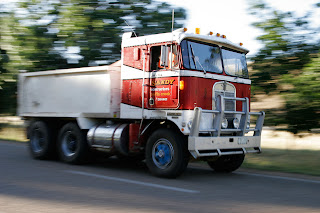
Slow shutter speed combined with panning the camera can achieve a motion blur for moving objects.
With this scale, each increment roughly doubles the amount of light (longer time) or halves it (shorter time).
Camera shutters often include one or two other settings for making very long exposures:
* B (for bulb) — keep the shutter open as long as the shutter release is held
* T (for time) — keep the shutter open until the shutter release is pressed again
The ability of the photographer to take images without noticeable blurring by camera movement is an important parameter in the choice of slowest possible shutter speed for a handheld camera. The rough guide used by most 35 mm photographers is that the slowest shutter speed that can be used easily without much blur due to camera shake is the shutter speed numerically closest to the lens focal length. For example, for handheld use of a 35 mm camera with a 50 mm normal lens, the closest shutter speed is 1/60 s. This rule can be augmented with knowledge of the intended application for the photograph, an image intended for significant enlargement and closeup viewing would require faster shutter speeds to avoid obvious blur. Through practice and special techniques such as bracing the camera, arms, or body to minimize camera movement longer shutter speeds can be used without blur. If a shutter speed is too slow for hand holding, a camera support — usually a tripod — must be used. Image stabilization can often permit the use of shutter speeds 3–4 stops slower (exposures 8–16 times longer).
Shutter priority refers to a shooting mode used in semi-automatic cameras. It allows the photographer to choose a shutter speed setting and allow the camera to decide the correct aperture. This is sometimes referred to as Shutter Speed Priority Auto Exposure, or Tv (time value) mode.
Source : http://en.wikipedia.org/wiki/Shutter_speed
Friday, March 26, 2010
Depth of Field
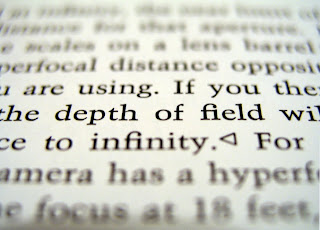
A macro photograph with very shallow depth of field.
In optics, particularly as it relates to film and photography, the depth of field (DOF) is the portion of a scene that appears acceptably sharp in the image. Although a lens can precisely focus at only one distance, the decrease in sharpness is gradual on each side of the focused distance, so that within the DOF, the unsharpness is imperceptible under normal viewing conditions.
In some cases, it may be desirable to have the entire image sharp, and a large DOF is appropriate. In other cases, a small DOF may be more effective, emphasizing the subject while de-emphasizing the foreground and background. In cinematography, a large DOF is often called deep focus, and a small DOF is often called shallow focus.
The DOF is determined by the subject distance (that is, the distance to the plane that is perfectly in focus), the lens focal length, the lens f-number, and the format size or circle of confusion criterion.
For a given format size, at moderate subject distances, DOF is approximately determined by the subject magnification and the lens f-number. For a given f-number, increasing the magnification, either by moving closer to the subject or using a lens of greater focal length, decreases the DOF; decreasing magnification increases DOF. For a given subject magnification, increasing the f-number (decreasing the aperture diameter) increases the DOF; decreasing f-number decreases DOF.
When a picture is taken in two different format sizes from the same distance at the same f-number with lenses that give the same angle of view, the smaller format has greater DOF. When a picture is taken in two different formats from the same distance at the same f-number using lenses of the same focal length, the smaller format has less DOF.
Cropping an image and enlarging to the same size final image as an uncropped image taken under the same conditions is equivalent to using a smaller format under the same conditions, so the cropped image has less DOF.
When focus is set to the hyperfocal distance, the DOF extends from half the hyperfocal distance to infinity, and the DOF is the largest possible for a given f-number.
The advent of digital technology in photography has provided additional means of controlling the extent of image sharpness; some methods allow extended DOF that would be impossible with traditional techniques, and some allow the DOF to be determined after the image is made.
source : http://en.wikipedia.org/wiki/Depth_of_field
How to Take a Good Photo?
Good Composition
I think that the most important factor in a successful photo is image composition. A good composition can turn a boring subject into a very interesting photo. On the other hand, a spectacular subject can lead to a boring photo in a failed composition.
High Technical Quality
High technical quality in a photo is very important. Automatism of camera doesn't always guarantee a technically flawless photo. There is lot to learn in this area. Technical success requires a good knowledge about equipment and a lot of experience about different shooting conditions.
The Right Moment
Taking the photo exactly at the right moment is challenging but when successful it can bring enormous amount of interest into the photo. The right moment can mean for example a certain happening or ideal weather conditions.
An Interesting Subject
An interesting subject helps to create a successful photo. An interesting subject can be for example a different or a rare subject. It's important to find a interesting subject, but in my opinion not as important as the first two factors. A peculiar point of view or composition can turn a boring subject into an interesting photo.
source : http://www.secondpicture.com
I think that the most important factor in a successful photo is image composition. A good composition can turn a boring subject into a very interesting photo. On the other hand, a spectacular subject can lead to a boring photo in a failed composition.
High Technical Quality
High technical quality in a photo is very important. Automatism of camera doesn't always guarantee a technically flawless photo. There is lot to learn in this area. Technical success requires a good knowledge about equipment and a lot of experience about different shooting conditions.
The Right Moment
Taking the photo exactly at the right moment is challenging but when successful it can bring enormous amount of interest into the photo. The right moment can mean for example a certain happening or ideal weather conditions.
An Interesting Subject
An interesting subject helps to create a successful photo. An interesting subject can be for example a different or a rare subject. It's important to find a interesting subject, but in my opinion not as important as the first two factors. A peculiar point of view or composition can turn a boring subject into an interesting photo.
source : http://www.secondpicture.com
Thursday, March 25, 2010
4th task : Alam

sebongkah batu pada pandangan sang semut.
camera angle :normal angle(total shot)
iso speed : 400
f/stop : f/2.8
date : 23/3/10

Sarang burung yang terbiar pada pandangan atas.
camera angle :high angle/bird view(total shot)
iso speed : 400
f/stop : f/2.8
date : 23/3/10

Terlihat sarang burung yang terbiar dalam perjalanan pulang.
camera angle :normal angle(total shot)
iso speed : 400
f/stop : f/2.8
date : 23/3/10

Dalam perjalanan mencari sarang.
camera angle :normal angle(established shot)
iso speed : 400
f/stop : f/2.8
date : 23/3/10

Dari pandangan seekor semut.
camera angle :low angle/frog view(established shot)
iso speed : 400
f/stop : f/2.8
date : 23/3/10
Wednesday, March 24, 2010
Perkembangan Semasa.
Assalamualaikum dan Salam Sejahtera.
Untuk makluman semasa, setiap ahli dalam kumpulan rentaka 8 petala alam telah dan sedang melakukan tugas - tugas mengambil gambar untuk menyelesaikan tugasan yang telah diberikan. Oleh itu, sebarang update dalam blog ini akan dibuat dalam masa terdekat. Untuk tugasan ke - 4, kumpulan rentaka 8 petala alam telah bersetuju untuk memilih satu tema iaitu ALAM atau NATURE. Tema ini dipilih berdasarkan pemerhatian terhadap alam yang mana telah menarik minat setiap ahli untuk menjadikannya sebagai subjek tugasan ke - 4 dalam komunikasi foto. Foto - foto yang bertemakan alam yang diambil akan dimuatnaik dalam tempoh terdekat. Sekian, Terima Kasih.
Kapten..
Untuk makluman semasa, setiap ahli dalam kumpulan rentaka 8 petala alam telah dan sedang melakukan tugas - tugas mengambil gambar untuk menyelesaikan tugasan yang telah diberikan. Oleh itu, sebarang update dalam blog ini akan dibuat dalam masa terdekat. Untuk tugasan ke - 4, kumpulan rentaka 8 petala alam telah bersetuju untuk memilih satu tema iaitu ALAM atau NATURE. Tema ini dipilih berdasarkan pemerhatian terhadap alam yang mana telah menarik minat setiap ahli untuk menjadikannya sebagai subjek tugasan ke - 4 dalam komunikasi foto. Foto - foto yang bertemakan alam yang diambil akan dimuatnaik dalam tempoh terdekat. Sekian, Terima Kasih.
Kapten..
Subscribe to:
Comments (Atom)


